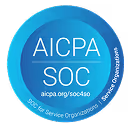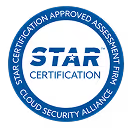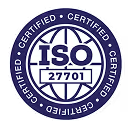In the world of Professional Services, profitability isn't just about balancing the books; it's about ensuring that every project contributes positively to the bottom line while delivering exceptional value to clients.
Measuring and managing project profitability is a complex process that involves a combination of metrics, measurements, and strategies.
Read on for a thorough understanding of project profitability, essential metrics and measurements, steps to measure profitability, and best practices for project profitability management.
Understanding project profitability in professional services
Project profitability is the process of assessing whether the revenue generated from a project exceeds the costs associated with delivering it. It's not limited to a one-time assessment but requires continuous monitoring throughout the project's lifecycle.
The ultimate goal is to identify potential issues early and make data-driven decisions to ensure the project remains profitable.
Key metrics to consider for measuring project profitability
Achieving project profitability requires a careful evaluation of specific metrics that serve as the compass for assessing project profitability, such as:
Gross profit margin
The gross profit margin acts as the litmus test, determining the efficiency with which a project utilizes its resources to generate profit.
In essence, it calculates the percentage of revenue that remains after the direct costs associated with delivering a service are deducted.
Formula for gross profit margin:
Gross profit margin = (Gross profit / Revenue) x 100
Why it matters
Gross profit margin sheds light on a project's ability to optimize its resources efficiently. A higher gross profit margin signals that the project is effectively managing its direct costs while ensuring that profitability remains at the forefront.
Net profit margin
Net profit margin takes a more all-encompassing approach by considering all costs—direct, indirect, and often-overlooked overhead expenses. This holistic approach provides a bird's-eye view of a project's profitability.
Formula for net profit margin:
Net profit margin = (Net profit / Revenue) x 100
Why it matters
The net profit margin is crucial because it goes deeper into profitability by factoring in all expenditures. It reveals if a project is not only covering its direct costs but also generating substantial profit after considering every expense.
Thus, it provides an in-depth and comprehensive understanding of a project's financial health.
The ideal profit margin can vary depending on the industry and market conditions.
In professional services, a good gross profit margin typically ranges from 30% to 60%, while a net profit margin of 15% to 25% is considered strong. However, it's crucial to benchmark your profit margins against industry standards and your organization's historical performance.
Project time tracking
Project time tracking helps professional service teams navigate efficiency and productivity while ensuring successful project delivery.
It is a measure of resource management since it tracks the hours employees dedicate to specific tasks and projects. Time tracking is useful because it directly plays a key role in resource allocation for future projects, identifying bottlenecks, ensuring precise client billing, and evaluating the productivity of employees.
Project time tracking doesn't have a single formula like other financial metrics. Instead, it focuses on recording the hours employees spend on specific tasks or projects. This data can be collected through manual timesheets or automated time tracking software. Therefore, it's not represented by a mathematical formula but rather by the process of recording and tracking hours worked.
Why it matters
Effective time tracking isn't a mere logistical necessity; it's the cornerstone of optimal resource management. By tracking time accurately, professional service organizations ensure that their resources are invested wisely, optimizing efficiency and productivity. It can also acts as a diagnostic metric, revealing areas where employees might be expending excessive time, thus allowing for targeted improvements.
Project time tracking is a critical component of measuring project profitability in professional services.
Employee utilization rate
This measures how efficiently employees allocate their time to billable work.
Formula for employee utilization rate:
Utilization Rate = (Billable hours / Total available hours) x 100
Why it matters
The employee utilization rate is the pulse of a project's profitability. A high utilization rate signals the efficient allocation of employees' most precious resource—time—toward billable tasks. In the professional services world, where time is both a currency and a finite resource, a high utilization rate translates into direct contributions to project profitability.
Profitability Index (PI)
The Profitability Index (PI) is a measure of a project's financial viability. This index calculates the ratio of the present value of cash inflows to the present value of cash outflows.
Formula for Profitability Index (PI):
Profitability Index (PI) = Present value of cash inflows / Present value of cash outflows
Why it matters
The Profitability Index is a practical tool that helps organizations assess project viability.
Measuring the Profitability Index for each type of project can give you deeper insights into the kind of projects you need to prioritize for improved project profitability management.
What is a Good Profitability Index?
As you can imagine, the interpretation of the index depends on its value.
1. If the index is less than 1: This indicates that the project's present value of cash outflows exceeds the present value of cash inflows. In other words, the project is not expected to generate a positive return and is likely not financially viable.
2. If the index is equal to 1: This means that the present value of cash inflows equals the present value of cash outflows. The project is expected to break even, but it may not generate significant profits.
3. If the index is greater than 1: This indicates that the present value of cash inflows exceeds the present value of cash outflows, resulting in a positive return. A profitability index greater than 1 suggests that the project is likely to be profitable.
Steps for measuring project profitability
Step 1: Define the key profitability metrics for your project management process
Let's start by pinning down the specific metrics that matter most to your projects. You could use a project profit margin metric such as gross profit margin or net profit margins, or an indicator like the Profitability Index. Make sure that you pick those that make the most sense for the services you provide, and the current stage of your business.
Step 2: Track revenues
Mastery of revenue and profitability begins with meticulous tracking. Account for all income sources tied to the project, whether it's billable hours, project fees, or other revenue streams.
The more comprehensive your revenue tracking, the clearer your financial picture.
Step 3: Break down costs
A thorough cost breakdown is the foundation of profitability assessment. Understand project costs in granular detail by categorizing them into:
- Direct costs (resources and materials)
- Indirect costs (overhead expenses such as contractor or consultant fees, training costs, administrative expenses, licensing costs, etc.)
Step 4: Monitor time and resource usage
Monitor time and resource usage with the right resource management or time and expense management tools. Most project management tools come with capabilities that provide insights into hours worked and resource utilization.
What can really make a difference is access to real-time insights on billable utilization insights so you can track project profitability on an ongoing basis.
Step 5: Calculate and analyze your profitability metrics
This step moves from understanding to calculation. Calculate your project's gross profit margin or net margin, based on the metrics you defined in Step 1. While the gross profit margin is a direct reflection of how efficiently your project generates profit, the net profit margin paints a more comprehensive financial picture.
Step 6: Compare actual vs. budgeted profitability
As part of your project management process, regularly compare your project's actual profitability to your budgeted projections.
This ongoing assessment allows you to make timely adjustments and keep financial goals on track.
Step 7: Establish a reporting and analysis routine
Finally, create a systematic reporting system that tracks project profitability over time. This isn't just about numbers; it's about trends, patterns, and insights. Analyze what's working, identify high-performing projects, and pinpoint areas for improvement.
Bonus tip: Consider non-financial metrics
In addition to financial metrics, consider non-financial factors like client satisfaction, project quality, and employee morale, as they can indirectly impact profitability.
Best practices for calculating project profitability
To truly prioritize project profitability, professional service organizations need to delve into the nuanced best practices that can make all the difference. Here are a few best practices to include in your project management process:
1. Start early
Before committing to a project, conduct a thorough profitability assessment. This includes defining clear project objectives, establishing success criteria, and estimating costs as accurately as possible. Assess whether the project aligns with your firm's profitability goals.
In addition, identify potential profitability challenges early on by assessing the project's risk profile and developing mitigation strategies. Even better, engage with your client early in the process to align expectations and clarify deliverables. A clear understanding of client needs and expectations can prevent scope creep and client dissatisfaction, both of which can impact profitability.
2. Look beyond the budget
While the initial project budget is a critical reference point, it should not be viewed in isolation. The budget represents a snapshot in time, and profitability is a dynamic journey. To truly understand your project's financial health, consider the following:
Contingency planning
Unexpected expenses, delays, and scope changes can throw a wrench into your budget. Plan for contingencies and have a strategy in place to manage unexpected developments without eroding profitability.
Opportunity cost analysis
Every project consumes resources – be it skilled employees, company time, or software. Consider the opportunity cost of dedicating these resources to this project instead of others. Identify the kind of projects that truly justify the resource allocation.
3. Track regularly
Project profitability isn't a "set it and forget it" endeavor. It requires consistent tracking, analysis, and adjustments. Here's what we recommend:
Automated tracking tools
Leverage professional service automation tools or project profitability software to automate data collection and analysis. These tools can streamline the process, providing real-time insights into project costs and revenues.
Regular reviews and adjustments
Set a cadence for reviewing project profitability reports. Regularity is key. Analyze trends, assess variances from the budget, and ensure that you're on track to meet profitability goals.
Ways to increase project profit margins for improved profitability
Now that we've laid the groundwork for effective measurement of profitability, it’s time to explore strategies to enhance profit margins and drive improved profitability in professional services:
1. Eliminate scope creep
Scope creep is the silent profitability killer. Uncontrolled changes and additions to project requirements can lead to increased costs and timelines. To combat scope creep:
- Establish clear boundaries: Define the project scope clearly from the outset, such as at the project kickoff. Ensure that both your team and the client have a shared understanding of what's included and what's not.
- Set up change control processes: Implement rigorous change control processes. Any scope changes should be documented, evaluated for impact on profitability, and approved by all stakeholders before implementation.
2. Evaluate clients/projects with high resource demands but low profit margins
Not all clients and projects are equally profitable. For instance, a client may demand extensive resources but offer a narrow project profit margin. To address this risk, you need to:
- Regularly evaluate the profitability of each type of client and project.
- Consider renegotiating terms with such clients or, in extreme cases, discontinuing unprofitable projects or relationships.
3. Use time-tracking data for workflow improvements
Use time-tracking software to monitor employee productivity and utilization rates. This data provides actionable insights into resource allocation and project profitability.
Optimize workflows based on time-tracking data, and identify bottlenecks and areas for process improvement.
4. Make client retention a business priority
Client retention is often more cost-effective than acquiring new clients. Satisfied clients are more likely to provide repeat business and referrals. Build a client-centric culture to enhance client satisfaction and loyalty. Regular communication, real-time project visibility, and periodic feedback collection can go a long way in retaining clients.
Experience the best of project profitability management with Rocketlane
If you find yourself grappling with profitability challenges because of resource mismanagement and blind spots in your project management process, maybe your project management tools are to blame.
Rocketlane’s PSA capabilities are designed to streamline project management, simplify resource allocation and management, and ensure a direct impact on your profit margins.
Here’s how Rocketlane can help you measure and manage project profitability:
Resource management
Rocketlane's resource management ensures the optimum budgets and resource alignment for every project, ensuring improved project margins.
Time tracking
Capture real-time insights with Rocketlane's time-tracking capabilities. Monitor project progress, analyze resource utilization, and adjust on the fly for improved efficiency.
Flexible billing
Tailor billing to your project's requirements, whether you use a fixed fee approach or a time-and-material-based one.
Standardized financial processes and reporting
Standardize billing for precise revenue calculations and project cost assessments. Gain real-time visibility into project finances, including budget usage, planned versus actual revenue, and profitability.
Portfolio reports
Track revenue recognition across your project portfolio for accurate forecasting and strategic financial planning.
Sign up for a Rocketlane demo and experience all this for yourself.












